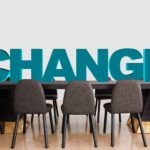Gender equality: it’s everyone’s business

On 6 December 1989, Marc Lépine walked into an engineering class at École Polytechnique de l’Université de Montréal. He separated women from the men in class and shouted to the women, “You are all feminists” as he shot the women, killing 14 and injuring 13. He then killed himself. Lépine, it appears, was disgruntled at how he perceived women were able to advance at the expense of men.
The anniversary of this event falls in what we now recognise in the 16 Days of Activism against Gender-Based Violence Campaign. These 16 days are a UN campaign run from 25 November, the International Day for the Elimination of Violence against Women, to 10 December, Human Rights Day. These are the days when we galvanise action to end violence against women and girls around the world.
I want to be clear about what gender equality is. Gender equality means that women, men and gender-diverse people are able to participate fully in all spheres of Australian life, contributing to an inclusive and democratic society.
Gendered violence
Globally, the first systemic international review of the prevalence of violence against women found that gendered violence affected more than one third of all women. An average of 137 women across the world are killed by a partner or family member every day.
Across Australia, one in three Australian women have experienced physical violence since the age of 15. More than one in six women in Australia (16 per cent) aged over 18 has experienced physical violence at the hands of a current or former intimate partner since the age of 15 years. This compares with one in 17 men.
So far this year, 66 Australian women have died from violence, far more than the often-quoted figure of one women per week. In case you thought things were getting better, in 2017 this was 53 deaths. Aboriginal and Torres Strait Islander women are 3.1 times more likely to report experiencing violence than non-Indigenous women. A disabled woman in Australia is twice as likely to experience violence from a cohabiting partner than a woman without a disability.
On university campuses, the picture does not, unfortunately, look better. The Australian Human Rights Commission showed us that about half of all university students in Australia reported being sexually harassed at least once in 2016, and 6.9 per cent of students were sexually assaulted on at least one occasion in 2015 or 2016. Female students were almost twice as likely to be harassed and more than three times as likely to be sexually assaulted than male students.
Men were most likely to be the perpetrators. Very disturbingly, students who identified as Aboriginal and Torres Strait Islander were more likely than women who did not identify as Indigenous to be sexually assaulted or harassed at university. Students with a disability and those who identify as bisexual or gay, lesbian or homosexual were more likely to report sexual harassment or assault in university settings than other students.
Students reported knowing the perpetrator about half of the time. Where they knew the perpetrator, more than two thirds of those harassed said that the perpetrator(s) of the most recent incident was a student from their university.
And these numbers, we know, do not represent the true picture of family violence; 82 per cent of women and a whopping 95 per cent of men who experienced violence by a current partner have never reported it to police.
Gender equality
In 2015, I worked as a policy and research officer at the Royal Commission into Family Violence. There I led the commission’s work on the intersection of family violence with family law and child protection. The commission produced a blueprint for identifying, responding to and reducing family violence in Victoria. The Victorian government has committed to an ambitious whole-of-government reform agenda to create the most comprehensive response to family violence in any jurisdiction, ever.
At the royal commission I learnt about the connection between family violence and gender inequality. In his opening address, counsel assisting the royal commission Mark Moshinsky stated:
“What causes family violence? … Some things are clearly known, and they can be a useful starting point. In the context of intimate partner violence against women, multi-country surveys indicate that in countries where men and women have more equal relationships, the prevalence of intimate partner violence against women is measurably lower. This suggests a strong correlation between gender imbalances and violence against women.”
In other words, there is a clear causal link between family and sexual violence and gender inequality. We tend to look at the causes of violence against women from a range of perspectives, including individual, relationship, community and societal level risk factors that led women to experience intimate partner and sexual violence (known as the “ecological model“).
Focusing on the big picture, what are the causes of family violence on the community and societal level?
At a community level, factors that support violence against women include:
- weak community sanctions against violence;
- limited access to sanctuary for abused women; and
- poverty.
At a societal level, factors that support violence against women include:
- where men are viewed by society as superior and of higher social status compared to women;
- where men are socialised to believe that they are superior to women, should dominate their partners and endorse traditional gender roles;
- where men have economic and decision-making power in households;
- where women do not have easy access to divorce; and
- where adults routinely resort to violence to resolve their conflicts.
These factors point us in the clear direction of gender equality when we as a community are trying to think about family and sexual violence prevention. If we want to make our community feel and be safer for women, it can’t just be gender and women’s specialists who do the work.
Nor can we see violence against women solely as a women’s issue. The same social structures that enable men to harm women also restrict men. Last month, the Men’s Project realised the first comprehensive study on the attitudes to manhood and the behaviours of young Australian men aged 18 to 30.
They found that among these young men, a set of beliefs that they brilliantly termed “The Man Box” is alive and well in Australia today. This set of beliefs within and across society places pressure on men to be a certain way:
- to be tough;
- not to show any emotions;
- to be the breadwinner;
- to always be in control and use violence to solve problems; and
- to have many sexual partners.
Young men who most strongly agree with these rules reported poorer levels of mental health, engaged in risky drinking, were more likely to be in car accidents and to report committing acts of violence, online bullying and sexual harassment.
We need to think about the problems that men and women face not as competing priorities for change but as part of the same toxic social problem.
It’s all of our job to fix this.
Global evidence gathered to date clearly demonstrates that improvements in gender equality accrue significant economic benefits, including greater productivity, higher GDP and reduced government spending. Every day that we fail to deliver gender equality, we pay the economic price.
Sustainable development
Sustainable development connects and balances environment sustainability, social inequality and economic development. Sustainable development does address living within our environmental means, but it’s much more than that. It also enables us to consider what we need to create strong, healthy and just societies that meet the needs of diverse people. The 17 Sustainable Development Goals adopted by United Nations members in 2015 aim to promote economic prosperity and a fair go for all while safeguarding a thriving environment.
Sustainable development holds great potential for us in thinking about our most difficult social problems, including gender inequality and violence against women and girls.
We can look at gender equality across all of the 17 Sustainable Development Goals. Additionally, goal five relates specifically to gender equality and requires us to “achieve gender equality and empower all women and girls”. The goal has nine targets associated with it:
- the elimination of violence against women and girls, including trafficking and sexual exploitation;
- ending discrimination;
- eliminating early and forced marriage and female genital mutilation;
- recognising unpaid care and work;
- ensuring women’s full and effective participation in leadership at all levels of decision-making in political, economic and public life;
- universal access to sexual and reproductive health;
- equal rights for women to economic resources and property;
- enhance the use of information and communications technology for women; and
- sound legislation and policies for gender equality.
What I think is most remarkable about sustainable development is that it requires us to work in interdisciplinary ways. By connecting social inequality with environmental sustainability and economic development, we have to think big and beyond the traditional disciplinary boundaries that tend to thrive within universities.
So what can you do?
No matter what you do or who you are, it is your job to make our community safer for all of us, regardless of gender, sexuality, race or disability.
- If you’re a parent of young children, what conversations can you have with your children to challenge any rigid gender stereotypes they may express?
- Have you thought about how you could safely call out or show disapproval of sexist or discriminatory language used by someone in a social situation?
- If you’re organising committees or speakers, how will you consider the gender balance on the panel?
- Are you familiar with the support services if a family member, colleague or friend discloses abuse to you?
- What can you do in a practical or policy sense to support family members, friend and colleagues, both female and male, who have caring responsibilities?
We can no longer claim that the task of addressing gender is someone else’s business. We need to be the change we want to see in the world.
This is an edited extract of a speech delivered by Dr Becky Batagol at the International Day For the Elimination of Violence Against Women, at Monash University. It was published by Lens.
Dr Becky Batagol is a researcher and teacher at Monash University. She focuses on family law, family violence, non-adversarial justice, dispute resolution, gender, child protection and legal education.













